ChemConnect 2022

ChemConnect 2022
Date : September 21, 2022
Organizer: Indian Chemical News
About the Event: Mr. Mukund Vasudevan, MD, Moglix, shared his perspective on ‘Paradigm Shift in Chemical Logistics & Supply Chain’ at ChemConnect 2022 today, which is being organized by the Indian Chemical News.
AIMA`s 49th National Management Convention
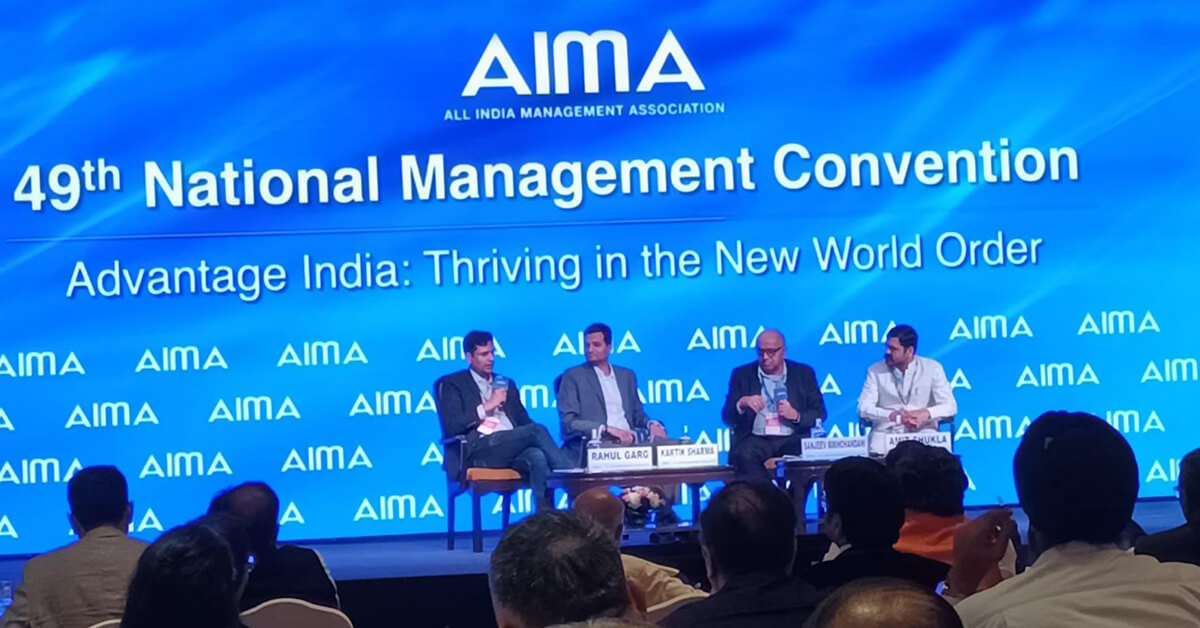
AIMA`s 49th National Management Convention
Date : September 20, 2022
Organizer: All India Management Association
About the Event: Mr. Rahul Garg, Founder & CEO, Moglix recently shared his perspective on ‘India’s Gen E: Start-ups, Upstarts and the Next Boom’ during a panel discussion held at the 49th National Management Convention of the All India Management Association (AIMA).
Brand Connect by CIDC
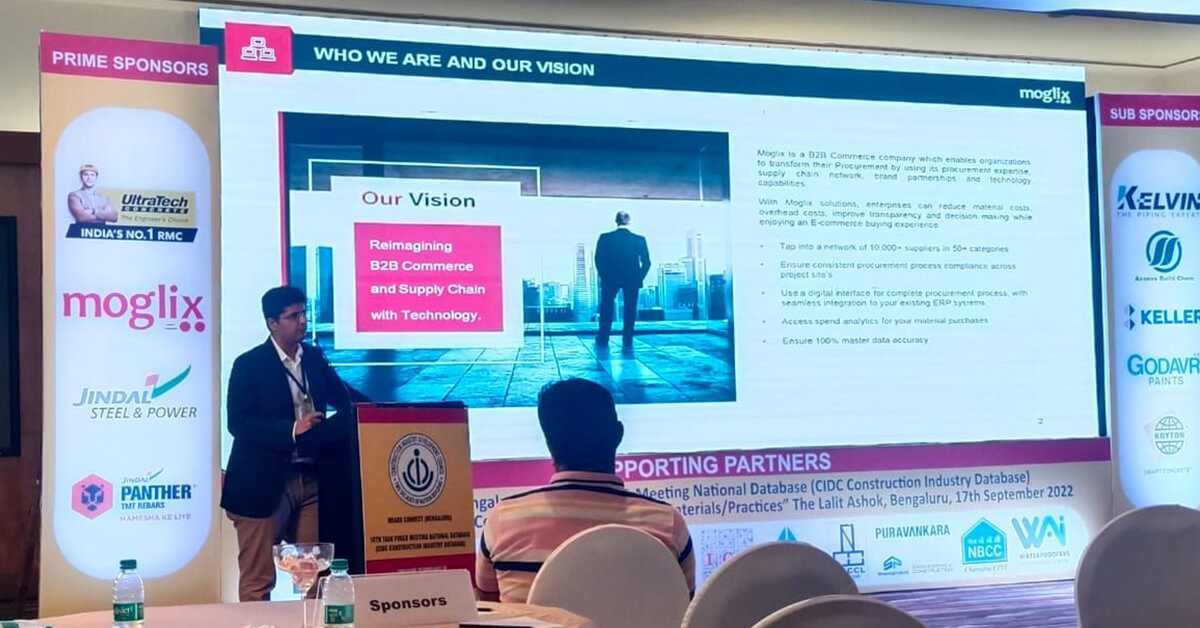
Brand Connect by CIDC
Date : September 17, 2022
Organizer: Construction Industry Development Council (CIDC)
About the Event: Mr. Adhyan Anand, Associate Director, Infra & PSU, Moglix Business, recently addressed the community of EPC companies and OEMs that are building India’s infrastructure, at the Bengaluru Chapter of the 10th Task Force Meeting & Brand Connect of the Construction Industry Development Council (cidc).
Gujarat Industry and SME Summit
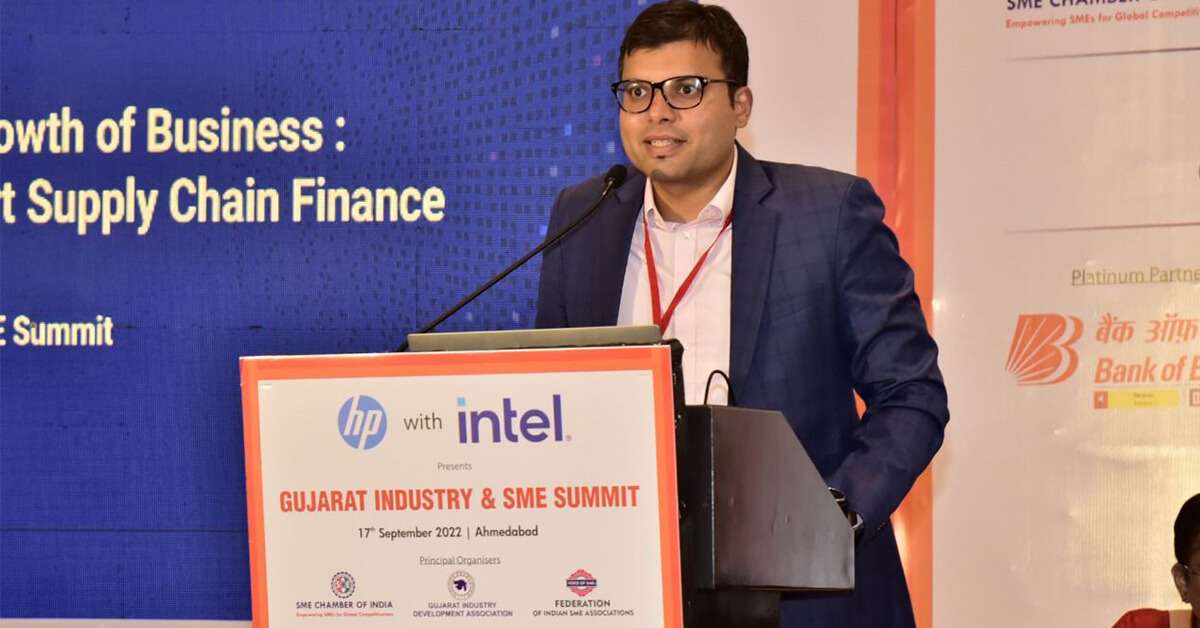
Gujarat Industry and SME Summit
Date : September 17, 2022
Organizer: SME Chambers of India
About the Event: Mr. Pramit Joshi, Senior Director, Credlix, recently shared his perspective on the topic, ‘Achieve Rapid Growth of Business with Domestic & Exports Supply Chain Finance’ at the Gujarat Industry & SME Summit organized by the SME Chamber of India.
Credlix in collaboration with Export Promotion Councils
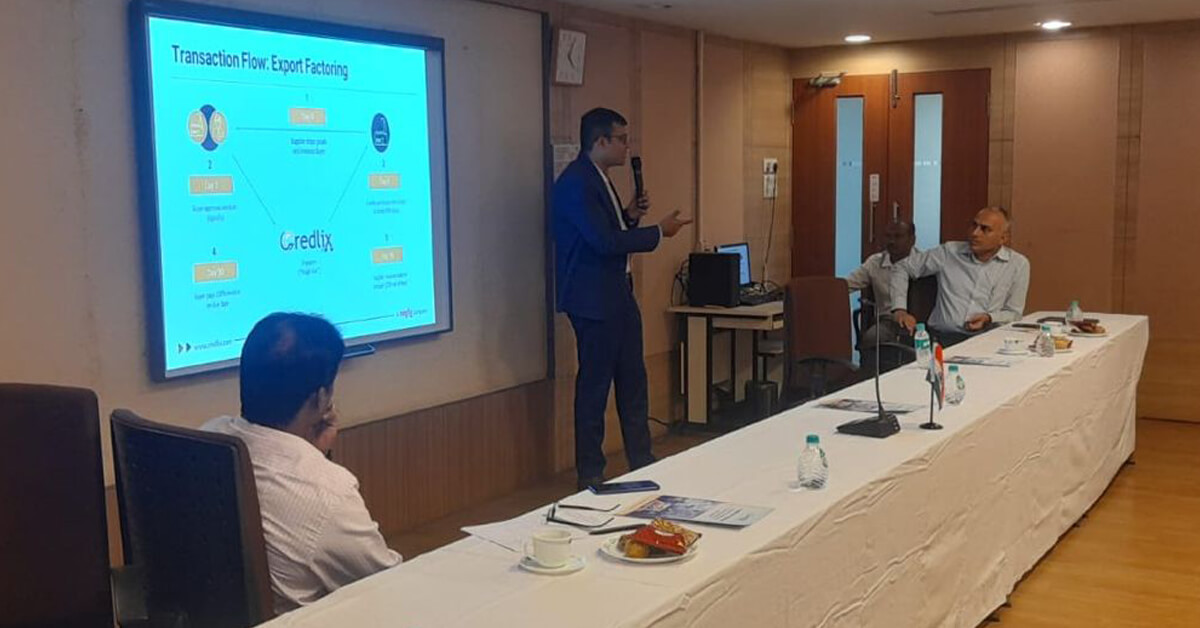
Credlix in collaboration with Export Promotion Councils
Date : September 13, 2022
Organizer: Export Promotion Councils
About the Event: Mr. Pramit Joshi, Senior Director, Credlix recently shared his perspective on ‘Achieving Rapid Growth of Business with Exports Factoring’ at EPCES.
Fin-Tech and Credit Expo 2022

Fin-Tech and Credit Expo 2022
Date : September 9, 2022
Organizer: The Bengal Chamber
About the Event: Mr. Kailash Rathi, Director, Credlix recently shared his perspective on ‘Supply Chain Finance by Credlix: Domestic Exports’ at ‘Fintech & Credit Expo 2022’ organized by The Bengal Chamber of Commerce and Industry.
Complete Guide to Sustainability in Procurement

Complete Guide to Sustainability in Procurement
As per a study conducted by Mckinsey, only 20% of the CPOs surveyed said their companies used sustainability as a key criterion to make sourcing decisions. This is far from encouraging because sustainability is the future. Most industry leaders across the globe make the shift towards future-proofing their operations with sustainability at the core. Additionally, an increasing number of organizations are also driving their efforts toward tackling Environment, Social, and Governance (ESG) issues.
Against the backdrop of these developments, sustainability is the way forward for all facets of supply chain management, including procurement. Sustainable practices are crucial for procurement leaders who want to align their strategies with their organization’s overall principles.
With ‘sustainability’ being the buzzword here, let’s understand how MRO procurement can be transformed to accommodate this necessary principle.
Upgrade to Sustainable Procurement with 3 Simple Steps
Procurement is one of the most important functions in an organization’s supply chain. To implement end-to-end sustainability in your organization’s procurement function, it is pivotal to assess the status quo. Furthermore, you must detect the missing links and devise a comprehensive strategy to address these issues.
Here are the steps that you can adopt for a sustainable approach to all aspects of procurement, including MRO categories.
1. Take stock and ascertain the status quo/weigh up and mark the status quo: The first step is assessing where your supply chain stands and ascertaining its ESG impact. Once you have established the status quo, you must identify the elements of the supply chain which can be optimized. You may be faced with several bottlenecks in the process, for instance, the challenges in MRO procurement.
2. Develop a core strategy and plans to implement it: Having established the areas of improvement in the supply chain function, you must move on to the next step. Develop a strategy to incorporate sustainable practices and processes in procurement. This strategy should encompass all the elements of procurement, ranging from supplier selection to data management and visibility.
3. Drive a phased implementation of the sustainable procurement strategy: Implement an organization-wide sustainable approach to procurement in a phased manner, and make course corrections wherever necessary. It is critical to monitor every step of the transition and compare actual results with the planned ones. Subsequently, you must ensure that the necessary rectifications are implemented in a timely manner.
Switch To Sustainable Procurement Now!
Driving a shift from legacy systems in procurement to sustainable practices is a comprehensive undertaking. Therefore, assistance from experts can help streamline the transition. At Moglix, we can help you streamline your procurement function, including MRO procurement. Download our exclusive e-book to get your hands on an exclusive guide to help you nail the procurement game!
Are you looking to transform your procurement function? Send us your business queries at info@moglixbusiness.com.
Digitalization is the next frontier for product procurement
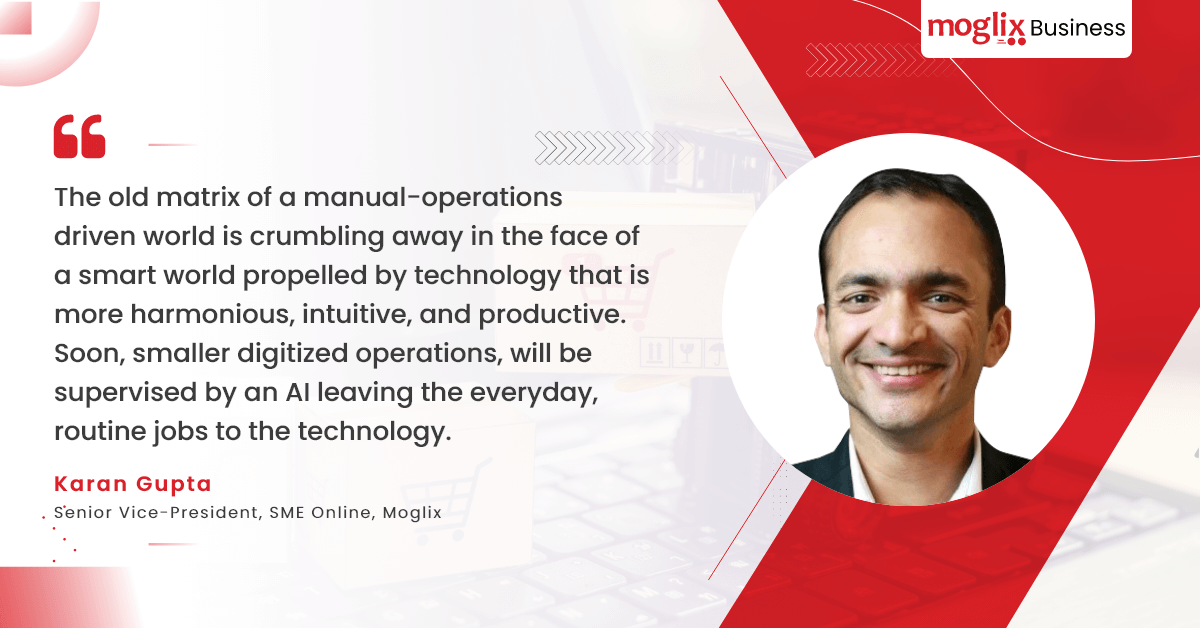
Digitalization is the next frontier for product procurement
A silent revolution is underfoot in India, apparent in India’s expanding scope of Digitalization of MSMEs. Be it a mom-and-pop store, a hole-in-the-wall shop, or a mid-sized firm that runs factories and employs hundreds of workers, more and more business entities are starting to realize that running an agile business without embracing the new digital paradigm is impossible.
The Digitalization endeavor underway in the country in varied sectors like agriculture, education, labor, logistics, energy, financial services, and many more are likely to create economic value of anywhere between $10 to $150 billion by 2025.
“Digitization for a firm should include, within its scope, numerous operations like the purchase of goods and services, vendor shortlisting, purchase agreements, inventory management, monitoring of cash cycles,”
adds Karan
Beware of committing the 5 Deadly Sins of Procurement
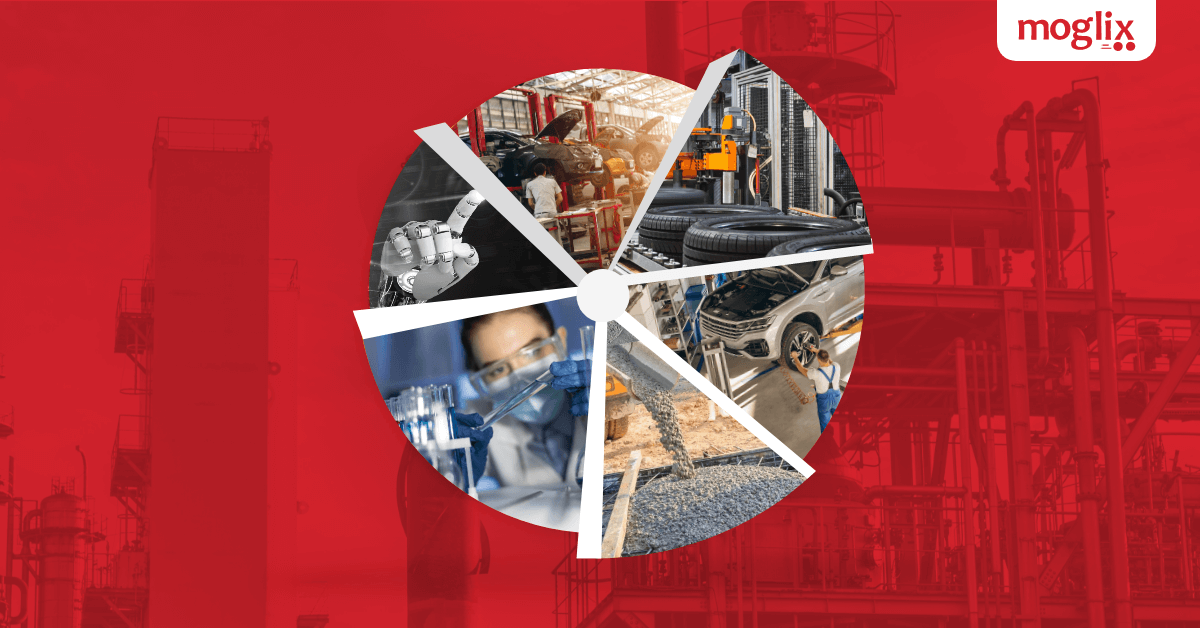
Beware of committing the 5 Deadly Sins of Procurement
Did you know that over 60% of enterprises rely on manual MRO procurement? But just because it’s prevalent, it doesn’t mean it’s the best strategy. If your organization is also yet to automate and upgrade its procurement process, here are two questions for you:
- Are you struggling to minimize expenses and keep track of costs?
- And are you piling inventory or facing material shortages?
It’s highly likely that you may have answered yes to either of these questions. Unfortunately, such gaps in the procurement process can cause consequential disruptions to your business operations.
Effective management of procurement, especially indirect procurement like MRO (Maintenance, Repair, and Operations), can considerably reduce unnecessary costs. However, curtailing costs alone is not enough. If the COVID-19 pandemic has taught us anything, it is that procurement dynamics are changing as rapidly as technology. Today, procurement spans across departments in companies — from finance to operations — advocating the need for a sound procurement strategy.
So, this Dussehra may be the perfect time for your organization to identify and steer clear of the fundamental errors in the procurement process. After all, the festival is all about the triumph of good over evil, and what better time than now to draw up a plan and fight the cardinal sins of MRO procurement?
5 Sins of Procurement
1. Getting your Sourcing wrong? Think Again
Indulging in any procurement activity without a robust sourcing strategy is calling trouble. From picking out the sellers, negotiating contracts, and buying the materials, vital sourcing channels and effective supply chain management are necessary. Many times there is a spike in demand for goods. You might need to procure from global networks to ensure timely delivery of the product. But, global markets are susceptible to volatility in the currency exchange market, time constraints, and import limitations.
You can mitigate supply risks by diversifying the sourcing channels and selecting the most suitable products and services you require to run the business.
2. Manual Processes are so last decade. What You can do instead?
Living in a digital world and relying on manual processes is outdated and inefficient. Doing things the old way can be comforting but waste time and money. One of the significant challenges in MRO procurement stems from investing time in manual tasks. They make procurement cycles lengthy and lead to increased operational costs.
By digitizing the procurement process, you can safeguard yourself from task burnout and working with poor-quality data. The advent of mobile apps and catalog-based buying ensures you undergo smooth procuring.
3. Streamlined Supplier Base
You might have a business where there is a need for specialized demands and unique materials. Often these necessities are met with a fragmented supplier pool and a decentralized procurement network. Such networks pose significant risks in carefully monitoring the procurement process and lead to massive costs, specifically in MRO categories. Additionally, a decentralized system leaves room for errors because individual departments/stakeholders purchase materials separately. It also results in poor management of data, thus suboptimal business analysis.
To reduce cost, waste, and risks associated with multiple supplier bases, you should opt for supplier consolidation and standardized pricing to beat the latent costs of the procurement: which will allow you with greater buying power and higher long-term returns.
4. Inadequate Analysis of Internal Needs
Faulty decisions always arise when you are uncertain about the company’s requirements and goals. Today, data is the world’s most critical resource, and its improper conduct will lead to inaccurate business forecasting. It paves the way for piling inventories because you cannot gauge the market demand and estimate necessary sales. It results in short budgeting and inferior overall outcomes.
Safeguard your business from the misery of inventory pile-up by strategic optimization. Avail of the benefits of vendor-managed inventory and enjoy the perks of an entirely data-driven process and demand-supply optimization. Also, with the help of an MRO aggregator, you can automate the procurement process and indulge in cost savings.
5. Shoddy Inspection in Contract Agreements
The biggest obstacle to the seamless procurement flow is the lags caused due to breaches in service and contract agreements. SLA breaches can result in delayed delivery of goods or subpar service performance. Moreover, seeking redressal from vendors becomes difficult if you do not follow proper contract management practices.
To avoid such violations, look at the finer points of the contract. Inspect the supplier proposal to keep away from making the wrong decisions.
Get Cracking with the proper steps
Managing MRO in procurement can get overwhelming if not tackled correctly. You can reimagine your procurement process with guided assistance from experts. Moglix, with its digital solution, can assess the pain points of your procurement process and elevate it to a new digital paradigm. Download this exclusive e-book, as it can be a helpful ally in your journey to ease the hassles of procurement.
Looking forward to transforming your procurement? Just send your business query to info@moglixbusiness.com.
Decoding Moglix’s Success and Acquisition Strategy
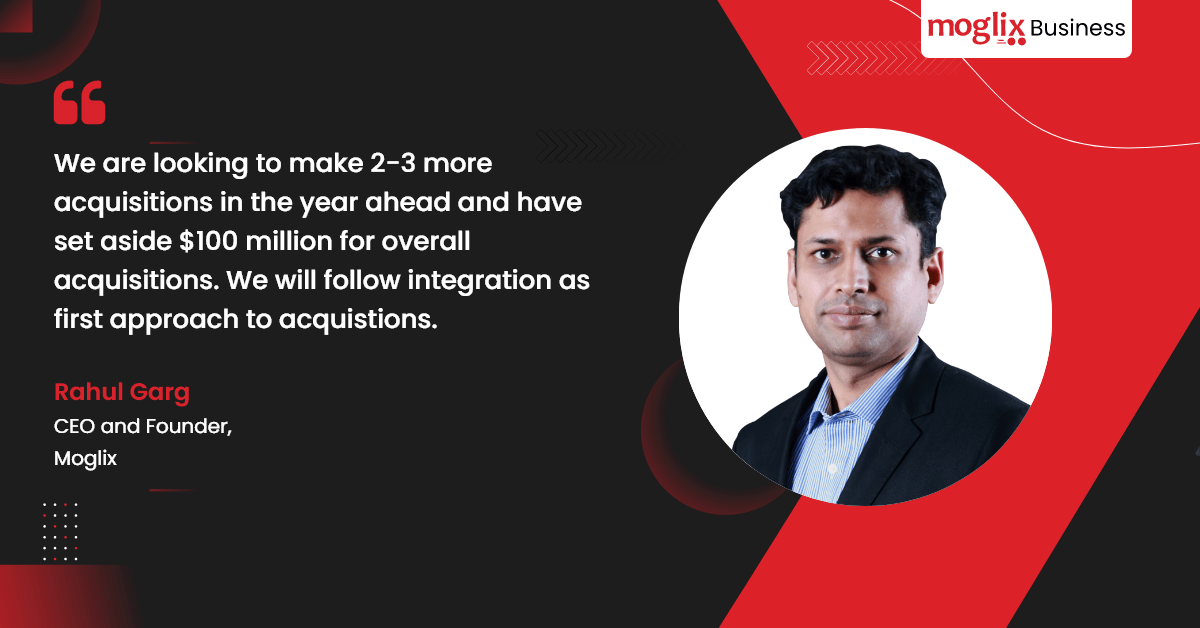
Decoding Moglix’s Success and Acquisition Strategy
In the recent interaction with Rahul Garg, Mint covers Industrial goods marketplace Moglix, that counts Sequoia Capital, Tiger Global and Accel Partners among its investors. The company has earmarked $100 million (Rs 814 crore) as part of its strategy to acquire up to three companies in the next 12 months.
Moglix launched in February 2021 the digital supply chain financing platform Credlix, which acquired trade financing focused fintech startup NuPhi for an undisclosed amount in November. Last year, Moglix also bought machinery marketplace Vendaxo.
“In terms of our global expansion plans, we have entered the UAE market last year and we are looking to foray into two more emerging markets. We are also looking deeper into Indian micro markets, which comprises energy, electric vehicles, hydrogen and solar verticals,”
adds Rahul Garg
